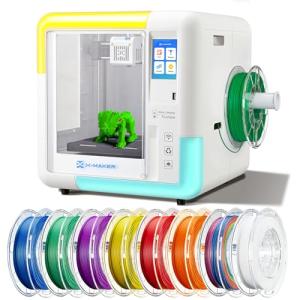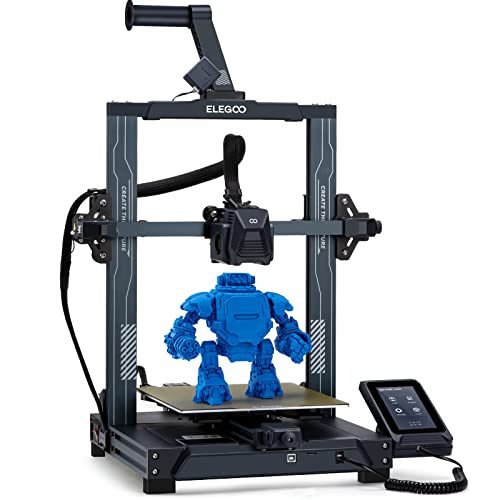So, you’re ready to dive into the world of 3D Printing? That’s awesome! Getting started with 3D printers for beginners can be exciting, but it can also feel a bit overwhelming at first. Don’t worry; I’m here to help you navigate through it.
First things first, you need to choose the right 3D printer. There are a few options out there, but for beginners, I recommend a fused deposition modeling (FDM) printer. These are usually more affordable and easier to use.
Once you have your printer, you’ll want to learn about the materials you'll be printing with. PLA filament is a great choice for beginners. It’s non-toxic, easy to work with, and doesn’t warp much when cooling down. Plus, it comes in tons of colors!
Next, let’s talk about software. You’ll need slicing software to convert your 3D models into instructions for your printer. Programs like Cura and PrusaSlicer are user-friendly and perfect for beginners. They can help you set up your prints quickly without too much fuss.
Finally, don’t forget to check out some online communities. Platforms like forums or Facebook groups can be super helpful. You can find tips, troubleshoot problems, and share your successes with others who are also into 3D printing!
Choosing Your First 3D Printer
Thinking about diving into the world of 3D printing? Picking your first printer can feel a bit overwhelming. But don’t worry! Let’s break it down so you can find the perfect fit. When exploring 3D printers for beginners, you’ll want to consider several key factors.
First up, budget! You can find options ranging from a couple of hundred dollars to a thousand or more. If you’re just starting out, aim for something in the mid-range. This way, you can explore different projects without breaking the bank. Look for printers that come with decent features and get solid reviews.
Next, think about what you plan to print. Do you want to create simple toys, prototypes, or maybe some cool home décor? Different printers excel at different things. For instance, FDM printers are a popular choice for beginners since they’re affordable and versatile. On the flip side, resin printers offer incredible detail for smaller models, but they can be a bit trickier to handle.
And let’s not forget about ease of use! Look for printers that come mostly assembled or have good instructions. Some printers have fancy features like auto bed leveling and touchscreen controls, which can make the experience smoother. Online communities and customer support can also be great resources if you run into any bumps along the way.
Lastly, make sure you think about the community and support around the printer you choose. A strong online community means you can find tutorials, troubleshooting advice, and inspiration from fellow users. This can make a world of difference, especially when you're starting out with 3D printers for beginners.
AOSEED X-Maker 3D Printer for Kids & Beginners
A fun and user-friendly 3D printer that inspires creativity and learning for all ages
Product information
€399.50 €319.60
Product Review Score
4.25 out of 5 stars
231 reviewsProduct links
Essential Materials You’ll Need
Filament: This is the primary material you’ll use for printing. Different types of filament are available, but here are the most popular:
Tools: Having the right tools can make your life way easier. Here are some must-haves:
Software: 3D printers for beginners usually come with some recommended software. Some popular options include:
Gather these materials, and you're all set to dive into the world of 3D printing! You’ll learn a lot along the way, and it’s gonna be a fun ride!
White 1.75mm Nylon Filament - 200g | 3D Printers
The perfect choice for high-quality prints with excellent durability and strength, ideal for your 3D printers
Product information
€11.25 €9.51
Product Review Score
4.74 out of 5 stars
87 reviewsProduct links
Basic 3D Printing Tips and Tricks
Getting started with 3D printing is exciting, but it can be a bit tricky at first. Here are some easy tips to help you navigate the world of 3D Printers for Beginners.
First off, always level your print bed. A level bed creates a solid foundation for your prints. If the bed isn’t level, your prints can turn out uneven or even fail completely. Take a few minutes to check this before starting a new project, and you’ll save yourself a lot of headaches later.
Next, pay close attention to your filament. Not all filaments are created equal. Some, like PLA, are beginner-friendly, while others can be more challenging. Make sure you store your filament properly—keep it in a dry place to avoid moisture issues. A little care goes a long way in keeping your prints looking great.
Calibration is your best friend. Spend some time getting your printer settings just right. Adjusting things like temperature, speed, and layer height can make a huge difference in your results. Don’t be afraid to experiment; sometimes the best way to learn is by trying different settings to see what works best for your printer.
Lastly, don’t be shy about joining communities. Online forums or local maker groups are full of helpful tips and friendly folks who love to share their experiences. They can be a great resource for troubleshooting issues and discovering new ideas for your projects. Remember, we’re all learning together in the exciting world of 3D Printers for Beginners!





